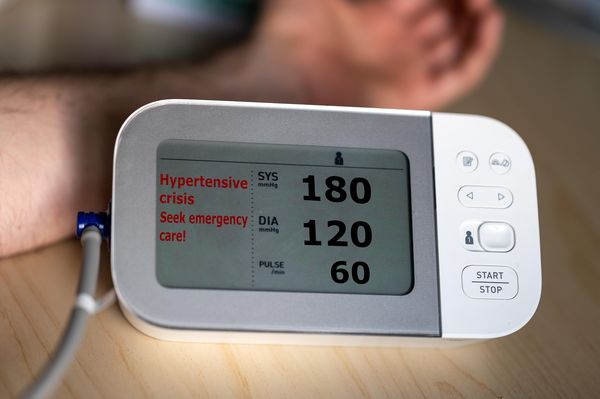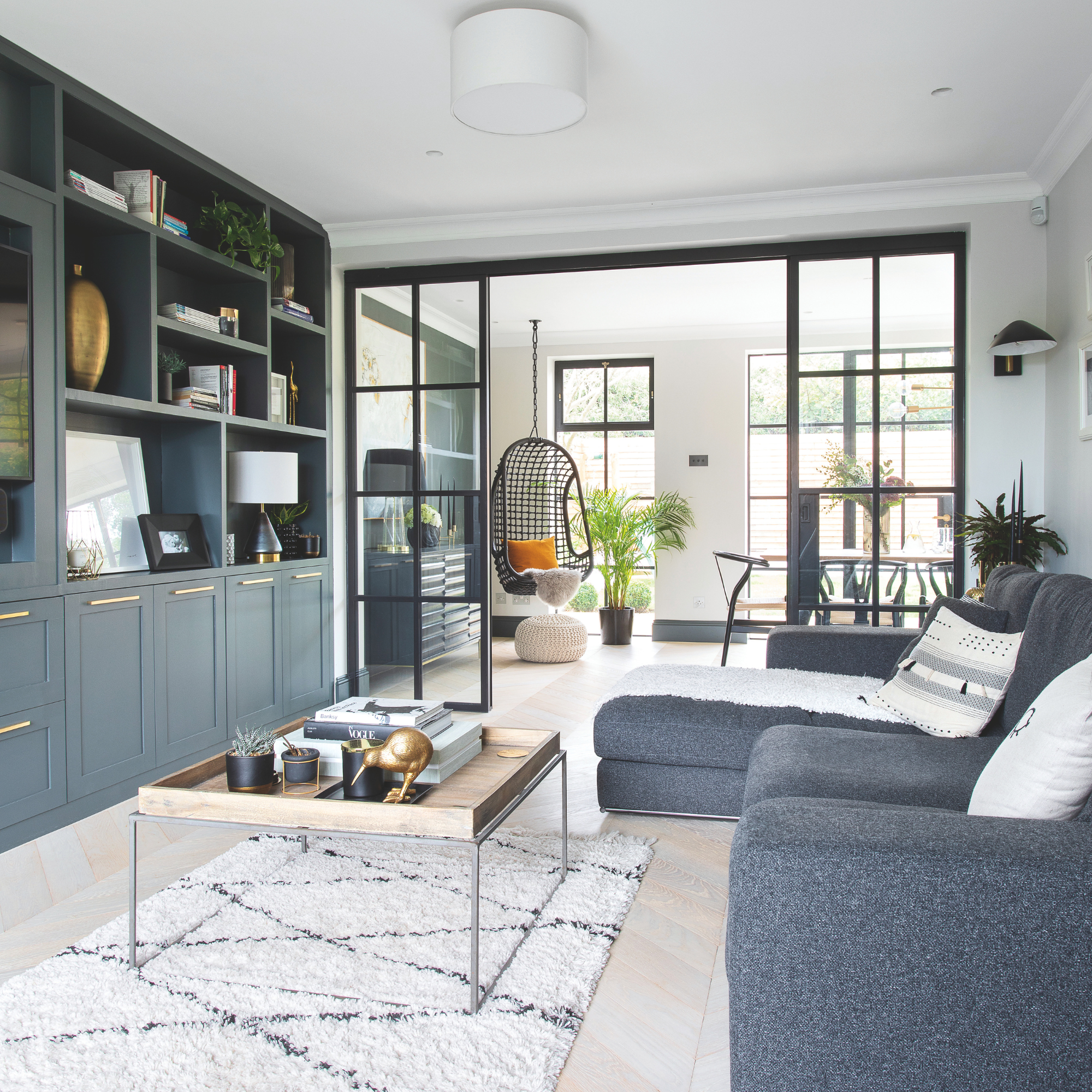
When it comes to creating a comfortable and healthy living space, humidity often takes a backseat to more obvious factors like temperature and decor. However, understanding what should the humidity be in a room can make all the difference, from protecting your health to preserving your interiors.
Soaring energy bills might have many of us pushing the limits on how long we can wait to turn the heating on, but it could be increasing the damp and humidity in our homes.
High humidity levels in a home can contribute to mould, mildew, and condensation on your walls and windows. While we're happy to put the best dehumidifier to work as a way to tackle this issue and get rid of damp, what you might not realise is that too low humidity levels in a house can result in warped woodwork and can also be detrimental to your house and your health, leaving you battling dry skin and irritated sinuses. So, how do you find that magic middle ground?
In order to find that perfect number, we asked experts what the humidity of a room should be, and why it matters so much.
What should the humidity be in a room?
To understand the ideal humidity of a room, we reached out to Chris Michael, managing director of Meaco. He explained, ‘In simple terms, anything between 40 and 60%rh (relative humidity) is fine.’
‘Below that level and the air becomes too dry; above that point and you run the risk of mould growth. The perfect level is seen as 50%rh, and that would be the preferred setting for a dehumidifier as the point at which it will turn itself on and off.’
Thankfully, this gives you a fairly large window to work with. But keeping your home at this level of humidity can be difficult for some - especially when you don’t know how to tell if your home has poor humidity or not.
Nicholas Auckland, heating and energy expert at Trade Radiators adds, 'Generally speaking, anything higher and you risk persistent condensation and the growth of potentially dangerous mould and damp. Anything lower and the air might be excessively drying, which can result in a dry throat, dry skin etc.'
'The best way to reduce the cost of treating mould is by maintaining a healthy humidity in the home so that it doesn’t form in the first place,' suggests Dr Jonathan Kirby, mould expert at Dryzone. 'By keeping the relative humidity between 40% and 60%, as recommended by the Institute of Air Quality Management, you can strike the right balance.'
How to tell if your home has poor humidity
Humidity levels in the home fluctuate for various reasons. Something as simple as having a shower or boiling potatoes can cause the humidity levels to rise while opening up windows and turning on air conditioning can cause them to fall.
And while a hygrometer like this ThermoPro Digital Thermo-Hygrometer from Amazon will help you monitor humidity levels in your home, there are some tell-tale signs you have poor humidity, too.
Signs your humidity levels are too high
- You spot mould and mildew on walls and other surfaces
- You notice you have dust mites
- Asthma and allergy sufferers struggle to breathe
- Your furniture starts to warp
- The paint on your walls starts to peel
Signs your humidity levels are too low
- You have dry and itchy skin
- You’re more susceptible to illnesses
- You notice an increase in static electricity
- Your door frames and other wooden furniture start to shrink
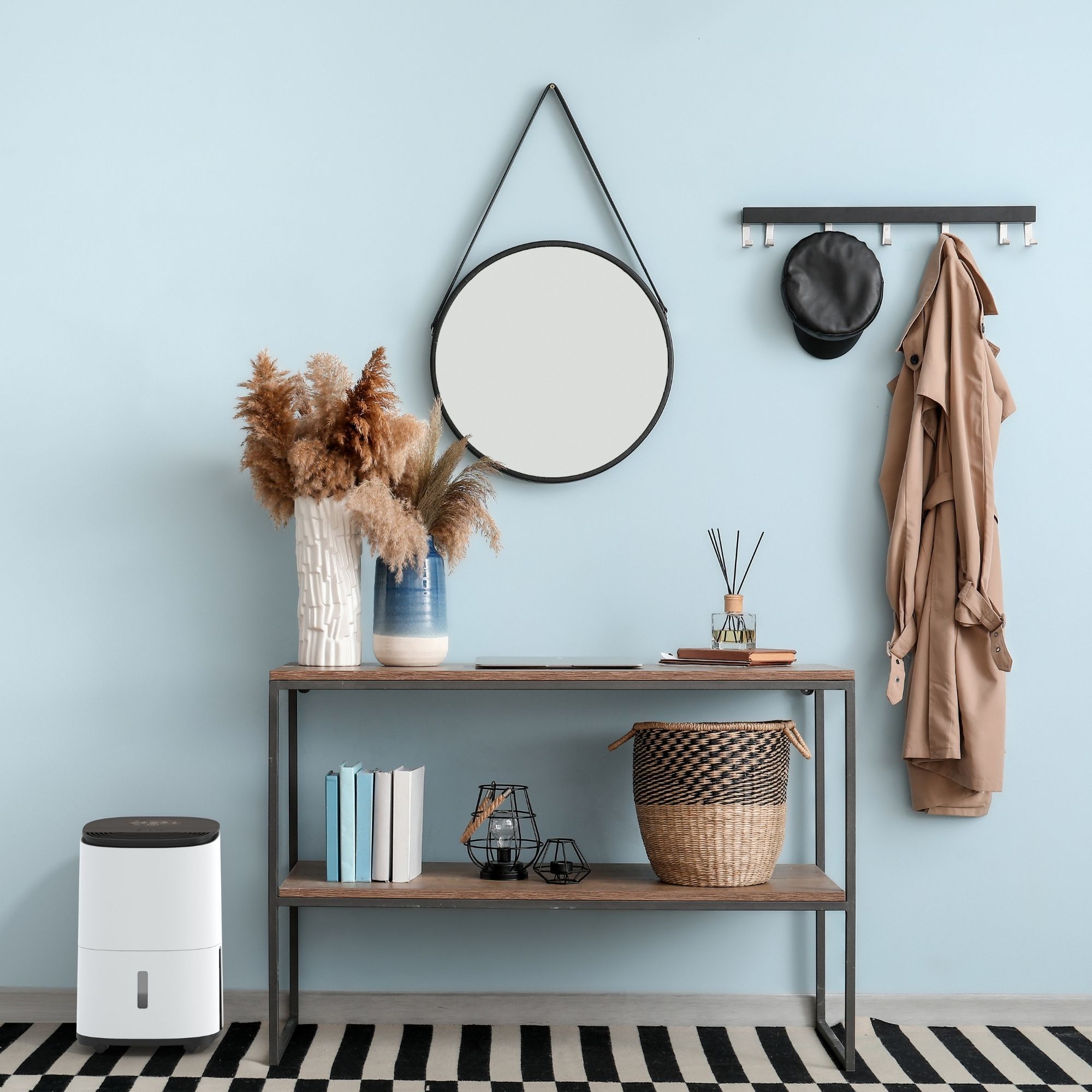
What to do if the humidity levels are too high
If your humidity is too high, there are so many ways to dry out a room. Here's what the experts recommend.
1. Use a dehumidifier
As you can probably tell by the name, a dehumidifier works to reduce the humidity levels in a room.
'When it comes to reducing your home humidity, a dehumidifier is the ideal appliance. You should be trying to reduce your indoor humidity level to between 30 and 50 percent for a comfortable and healthy environment,' explains Isabella Forgione, small appliances expert at AO.com.
'If this is lower than 30 percent, then this can lead to dry skin and if over 50 percent then this can encourage mould and dust mites in your home.'
And while there are four types of dehumidifiers sold in the UK, Chris would suggest two for the average homeowner. ‘Compressor and desiccant machines use an inbuilt hydrometer to measure the relative humidity,’ he explains.
‘Consumers can set a target humidity, and the appliance will work towards meeting that target, switching itself off when it's reached, only switching on again when it detects an increase in humidity. This is the most cost-effective way to manage indoor humidity.’
Or if you're debating whether to buy a moisture absorber instead of a traditional dehumidifier you could opt for a number of these highly-rated Absodry Duo family moisture absorbers.
The Meacodry Arete One is our top choice for energy efficiency and performance. Get your humidity levels just right with this moisture-zapping winner.
If you'll be primarily using your dehumidifier to dry clothes, this model has a dedicated laundry mode that will dry your clothes in a jiffy, while preventing excess moisture to circulate in your room.
Our managing editor, Thea, swears by this relatively cheap alternative to an electric dehumidifier. There's no noise with this moisture absorber and because there's no plug required, you can use these stylish units pretty much anywhere.
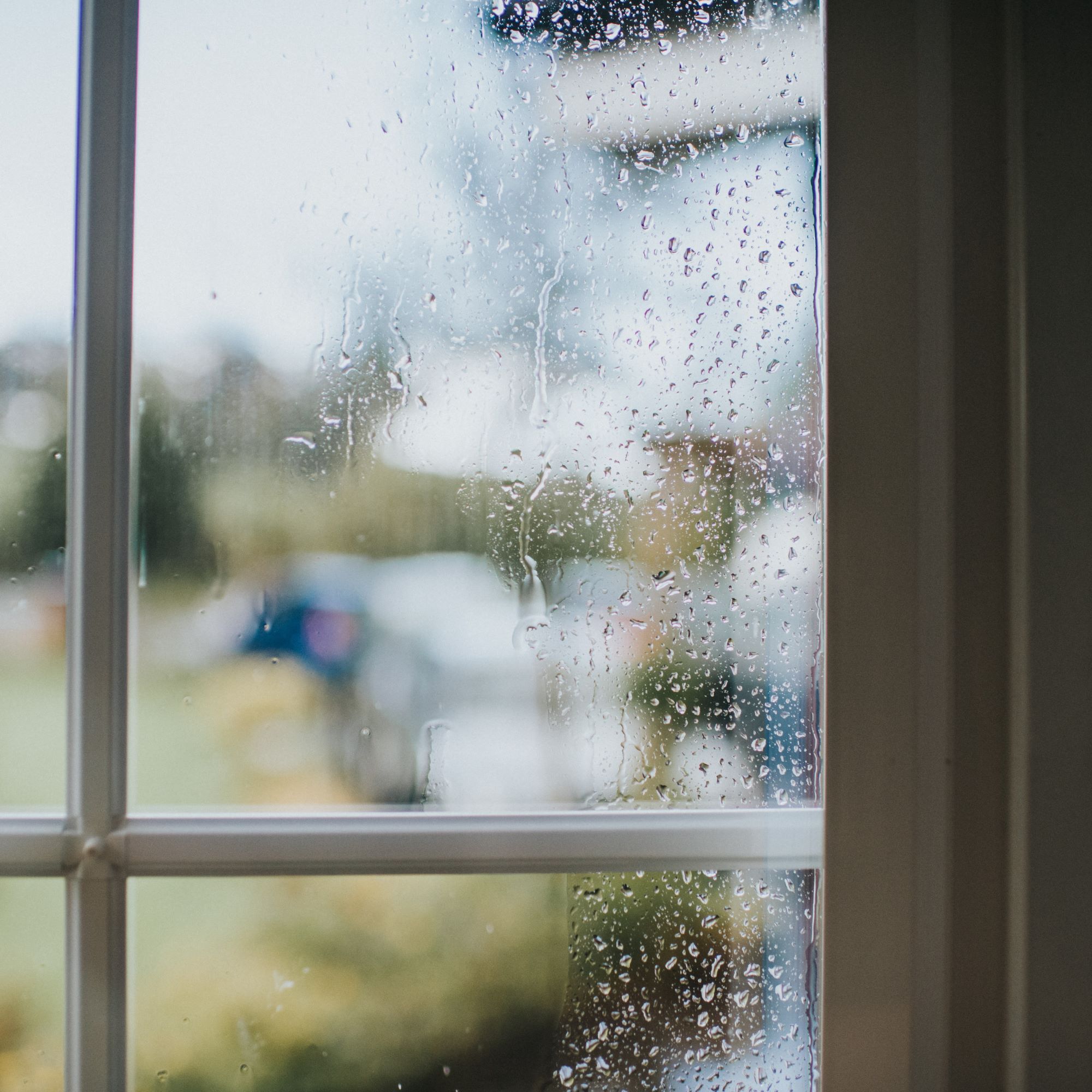
2. Improve ventilation
To lower humidity levels, you also need to lower the amount of moisture in the air. And one of the easiest - and cheapest - ways to do this is to improve ventilation in your room. Something as simple as opening up windows for as little as 10 minutes when the heating is off in the morning can make a big difference.
'Alternatively, a good idea is to ensure your window has a trickle vent installed into it, to allow ventilation throughout the home without the drop in temperature,' explains Jo Trotman, marketing manager at The Residence Collection.
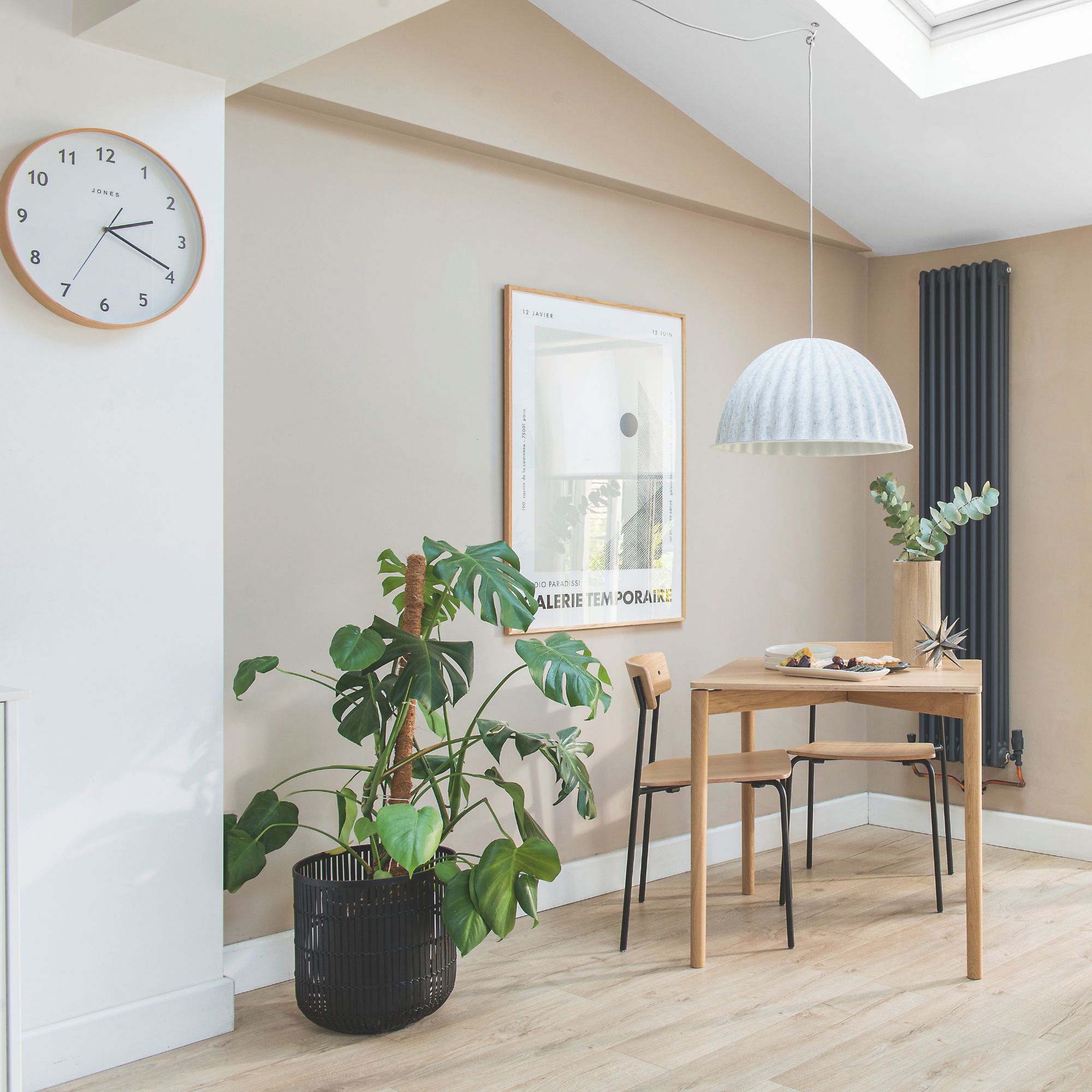
3. Take advantage of houseplants
Houseplants aren’t just for decoration. Many also have natural absorption properties, meaning they can lower the humidity in your room and even prevent mould in the bathroom.
While not every plant can lower humidity, popular plants such as palms, spider plants, and ferns are great options.
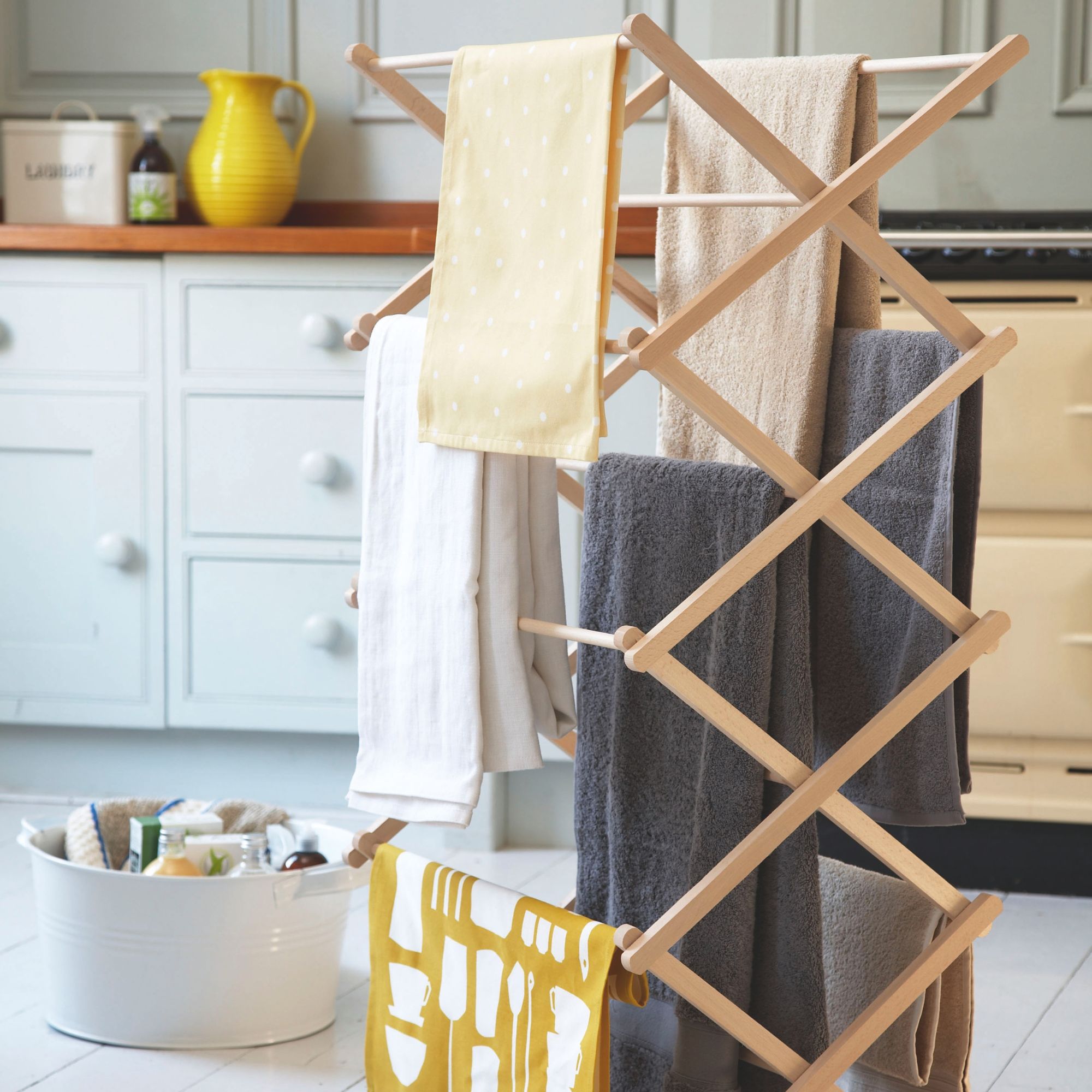
4. Limit extra moisture
There are so many things we do in our homes that increase the moisture levels, from having a shower to boiling the kettle and drying clothes. While you don’t have to stop doing those things, you do need to try and limit this extra moisture.
Do this by opening windows, using extractor fans, closing internal doors when cleaning and cooking, and drying your washing outside. If you can’t do that, though, opt for one of the best-heated clothes dryers instead.
'Drying laundry indoors is often unavoidable in winter, when the cost of running a tumble dryer can be prohibitively high,' explains Chris from Meaco.
'A single load of wet washing contains on average 2 litres of water, which is released into the air as it dries. In winter, clothes left to dry indoors can take much longer due to cooler temperatures and higher indoor humidity levels, sometimes resulting in a damp, musty smell.'
JML's heated clothes airer is fan-operated and is our top choice to dry clothes, namely because of its super-fast 2-3 hour drying times and its cover limits excess moisture to escape while drying.
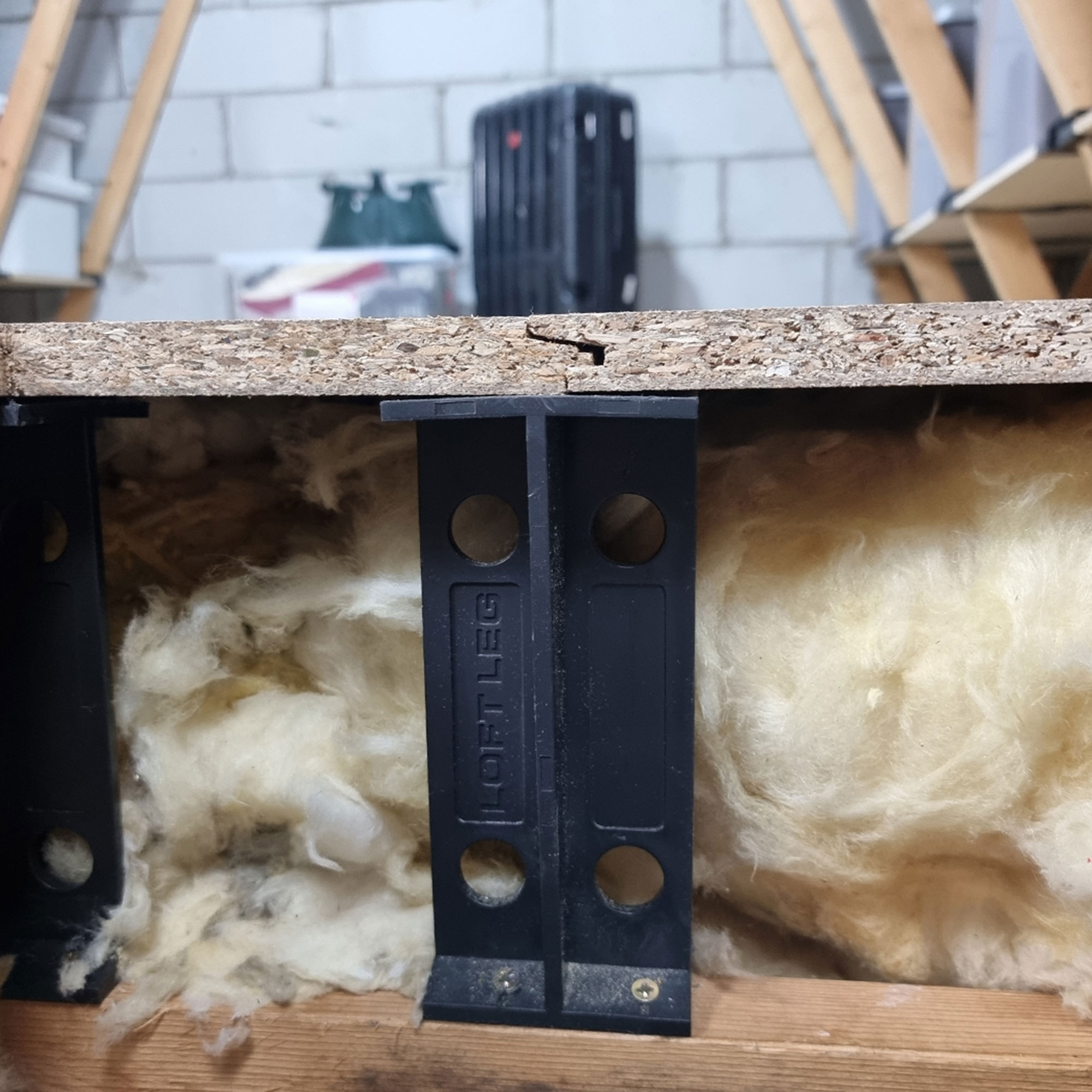
5. Look at improving your home's insulation
'If you’re heating and ventilating your home properly and still experiencing things like mould, damp or bad allergies, there may be other factors at play,' explains Stephen Hankinson, heating expert at Electric Radiators Direct.
'Insulation keeps moisture out of your home, by sealing it from the outside. It eliminates cold surfaces where condensation can form, keeping your home warmer and dryer.'
'If your home is poorly insulated, then too much moisture may be entering your home, and heating and ventilating may only do so much.'
'There are several ways to recognise if your home needs better insulation. For example, if your home gets cold immediately after you turn off the heating, this is a good indicator that warmth is escaping too quickly. As a result, your house or apartment may not be well insulated. This can differ across the home, as some rooms can be colder than others.'
'If you notice your top floor is extremely draughty, then you might benefit from loft insulation. Or if the colder rooms in your home are outward facing, then you may want to look into wall insulation.'
And if you live in an old house, insulation tape on windows is an easy solution to try. 'Faulty seals on window and door frames can also allow too much outside moisture in. Draught excluder tape for windows, or fabric draught excluders for the bottoms of your doors, may help. '
Prevent draughts and increase your home's insulation with this draught excluder that's available in six colours to tie in with your decor.
This budget-friendly door brush will help block out draughts and is super simple to install.
Our managing editor, Thea, used this exact sealing tape for her single-glazed windows to prevent draughts. It's also a bargain, costing just under £12 for 20m.
FAQs
Is 70% humidity too high for a bedroom?
Yes, it is. It’s important to stick to the 40% - 60% rule when it comes to humidity in the house - but this rule is even more important in the bedroom. That’s because a high level of humidity in a bedroom provides a breeding ground for mould, mildew, and even dust mites and bed bugs.
'At this level, you’ll likely notice condensation on windows and other cold surfaces, which can create an environment conducive to mould growth,' explains Chris Michael, managing director of Meaco.
'Mould thrives when humidity exceeds 60% and temperatures are above 10°C (50°F). For comfort and health, aim to maintain relative humidity between 40% and 60%.'
Not only is this damaging for your house, but it can also be incredibly dangerous for your health, as you’ll spend an average of eight hours each day breathing in mould spores and sleeping on bed bugs. As if that wasn’t enough, high humidity can also increase your chances of snoring!
Because of this, it’s always a good idea to invest in a dehumidifier for your bedroom, as a dehumidifier can help you sleep better. If you are struggling for budge you can pick up some good dehumidifiers for under £100.
Is 50 humidity too high in a house?
No, 50% humidity is perfect for a house. Most experts will agree that 40% - 60% humidity is the ideal humidity level for indoor rooms, as this will balance out the moisture levels in the air and keep you and your home free from harm.
It’s important to keep humidity levels at this percentage, though. Anything over 60% and you’ll need to put measures in place to bring that level down.
Who knew humidity was such a hot topic? Now you do, it's a good idea to keep on top of it.





